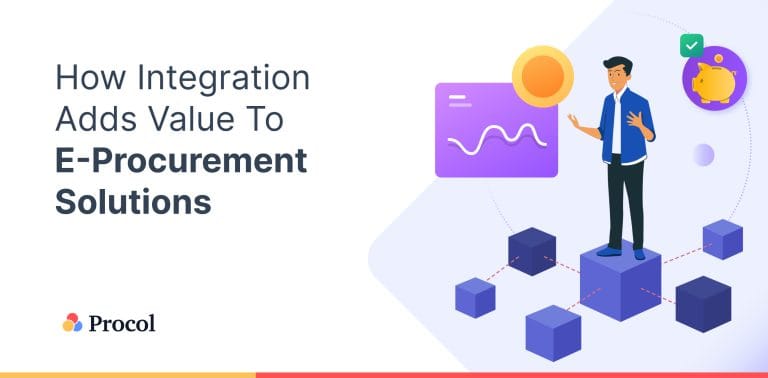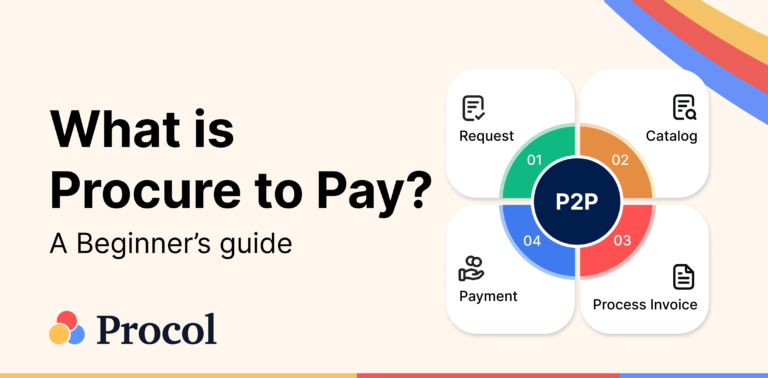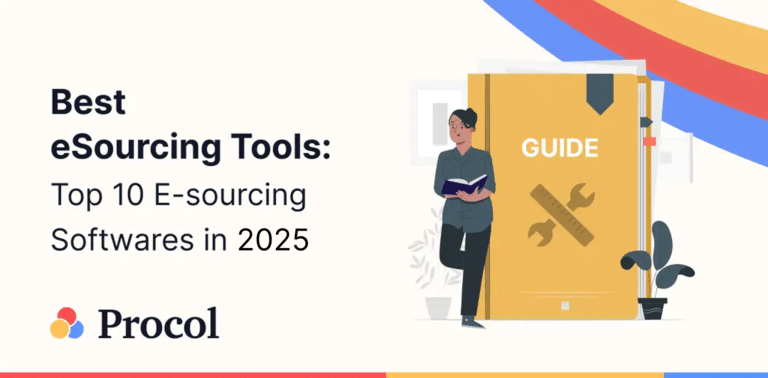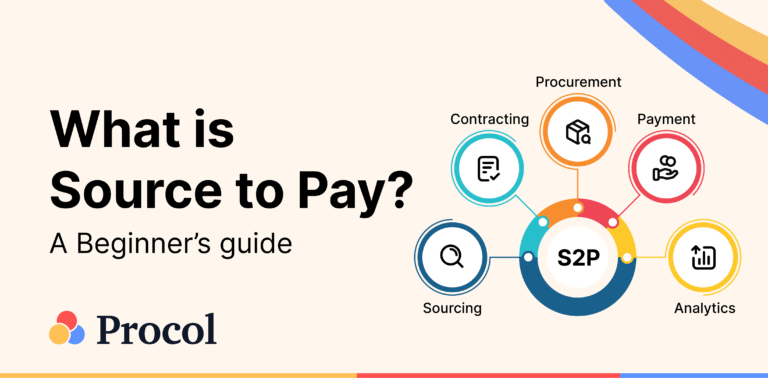Procol • April 15, 2025
How Integration Adds Value To E-Procurement Solutions

Why is Integrated Procurement Needed?
With a standalone e-procurement platform, only the internal procurement operations can be automated. Your enterprise won’t be able to realize the full potential of the automated procurement system because, without integration, manual data entry is unavoidable. The procurement software is helpful in cases where you create a purchase order and ask the supplier to send the supplies directly. However, if you want to make multiple purchases of smaller items directly from the supplier’s e-commerce store, it becomes a problem to continue using the e-procurement system.
With standalone procurement software, your employees have to browse the supplier website, look for items of interest, input those details in the procurement software, get approval for purchase orders, notify the suppliers, and get the products shipped based on company policies. This process involves manual data entry, which is time-consuming. As a result, your employees may decide not to use the procurement solution, meaning such purchases will become maverick spending.
Benefits of Integrated E-Procurement
An integrated e-procurement system directly connects the organization’s procurement platform with the supplier’s website. It’s a revolutionary method of carrying out B2B transactions. Such integration is possible if your organization has a procurement platform, and your procurement leaders have adopted online purchases directly from suppliers. The procurement system you use should also have purchase order automation features so that no manual data entry is needed.

The following are the benefits of using integrated e-procurement:
- Facilitates proper budgeting and spending.
- Reduction of manual data entry.
- Reduced overhead for your procurement staff.
- Facilitates establishing customized catalogs with the supplier.
- Improved purchasing accuracy.
- All purchases align with company policies.
- Ensures purchasing compliance.
- Ensures that the standardized purchase procedure is followed.
- Consolidates B2B payments and invoicing.
- Automates ordering and reordering.
- Effectively reduces maverick spending.
- Process Digitalization
- Encourages procurement staff to use e-procurement for all purchases.
Understanding Punch-Out Catalogs For Advanced Purchase Order Automation
Punch-out catalogues encourage suppliers to set up an e-commerce store, accessible directly from your organization’s procurement platform. It involves the following steps:
- From the buyer’s side, the procurement staff will open the procurement platform.
- Search for suppliers from the approved list of vendors for specific purchases.
- When a supplier is selected, the e-commerce store of the supplier opens within the B2B procurement platform.
- The buyer is authenticated automatically and logged into the supplier store. This ensures that discounts and offers are automatically applied to the purchase price.
- The buyer browses the seller’s catalogue for a pre-approved list of products. Suppliers usually set up custom product catalogues in the punch-out method.
- The buyer can keep adding products they want from the catalogue to their shopping cart, similar to any other e-commerce store.
- Once the items are added to the shopping cart, the buyer punches out.
The procurement system automatically extracts data from the shopping cart, applies promotions and discounts, and creates purchase orders directly from the procurement software. Depending on the approval criteria, purchase orders are automatically approved.
Suppliers fulfil the purchase orders they receive through the procurement platform. Invoices received by the e-procurement platform are paid automatically.
How To Implement E-Procurement Integration?
While the process of e-procurement integration is exciting, it is not easy. According to the Mckinsey survey, 93% of procurement leaders showed interest in creating a resilient supply chain. They want to build relationships with diverse suppliers to withstand disruptions. It is possible to build a resilient supply chain with a procurement solution that makes every spending accountable. Onboarding suppliers directly to the e-procurement platform and creating punch-out catalogs together with them will boost supplier relationships. It will also help suppliers to fill purchase orders quickly and get their invoices paid on time. Improved purchase accuracy benefits suppliers, and they can create exclusive relationships with buyers.
Depending on your organization’s infrastructure, you can implement e-procurement integration. It can be done using your own setup or utilizing third-party services. It also depends on the procurement software that you currently use.
There are several technical challenges when integrating an e-procurement platform with supplier e-commerce stores. Your organization may use different technology for the procurement platform. Suppliers may have their e-commerce stores built on various technologies. Making these two technologies talk with each other, share files and data, and communicate with each other is rather difficult to implement. Different technologies use different file formats, and the integration will be fruitful only with seamless data transfer.
The punch-out catalogues must be created only with a selected number of suppliers for specific products. You can complete the integration in-house while providing access control for purchases. Your procurement solution can limit certain users to specific products, ensuring that your employees do not make any unauthorized purchases. You can set up the integration for each supplier, customizing for the type of e-commerce store they have implemented.
Third-party service providers provide a seamless connection between your e-procurement platform and supplier website by providing the connection as a service. This connection is used as and when needed, and it does not require any changes in your infrastructure.
The choice between an in-house setup and a third-party integrated connection depends on the type of e-procurement platform you use and your suppliers. Nevertheless, the integration will save your organization a lot of time and money, despite the initial setup cost.
Procol is a world-renowned procurement solution that enables internal process automation and integration with supplier stores. Schedule a demo with us to learn how to easily integrate with multiple supplier e-commerce stores in order to make centralized processing a reality for your procurement staff.
Explore more from Procol
Discover expert tips, how-to guides, industry insights, and the latest procurement trends.

What is Procure-to-pay (P2P)? An Ultimate Guide
Procure to pay is the process from procurement of materials needed...

Best eSourcing Tools: Top 10 eSourcing Software in 2025
Discover top 10 e-sourcing tools and esourcing platforms necessary for efficient...

What is Source-to-pay in 2025? An Ultimate Guide
Source to pay is the process of sourcing vendors to procure...



















